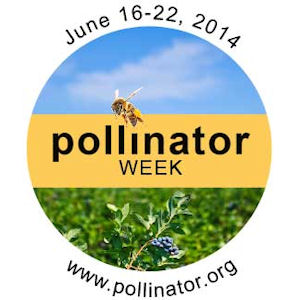 FAIRFAX, VA—In observance of National Pollinator Week (June 16-22), the National Pest Management Association (NPMA) and its consumer education arm, the Professional Pest Management Alliance (PPMA), have developed a variety of resources to help the public learn more about bees, birds, butterflies, and other pollinators throughout the week and in the coming months when longer-term dialogues about pollinator health ensue.
FAIRFAX, VA—In observance of National Pollinator Week (June 16-22), the National Pest Management Association (NPMA) and its consumer education arm, the Professional Pest Management Alliance (PPMA), have developed a variety of resources to help the public learn more about bees, birds, butterflies, and other pollinators throughout the week and in the coming months when longer-term dialogues about pollinator health ensue.
Now in its seventh year, Pollinator Week is an “international celebration of the valuable ecosystem service” provided by pollinators.
“With increased attention focused on bees and other pollinators recently, it is likely this year’s observance will see heightened attention from activists, journalists, government officials, and the general public,” says NPMA CEO Bob Rosenberg. “NPMA and PPMA have been working diligently to ensure the industry is poised to offer a credible, authoritative voice on pollinators.”
The organizations have launched a new website, www.pollinatorhealth.org. It is designed to offer the public a guide for understanding pollinators, the difference between good bees and bad stingers, and how to help honeybees thrive while keeping safe from the health threats posed by many stinging insects. They also developed customizable collateral that all NPMA members can use in educating customers about pollinators, including general facts and talking points for conversations on bee health.
To ensure the industry’s voice is represented to the public on pollinator discussions, NPMA and PPMA have retained Dr. Richard Fell, Professor Emeritus in the Department of Entomology at Virginia Tech, to serve as their pollinator health advisor. Fell will enhance the organization’s expertise in engaging in pollinator health discussions with consumers, the media, and policy makers.
While public education is the latest initiative on pollinators NPMA has pursued, the organization has been actively working with federal and state regulators, and other stakeholders equally committed to ensuring an appropriate relationship exists between the safety of the American public and the essential role bees play in the environment.
Leave A Comment